
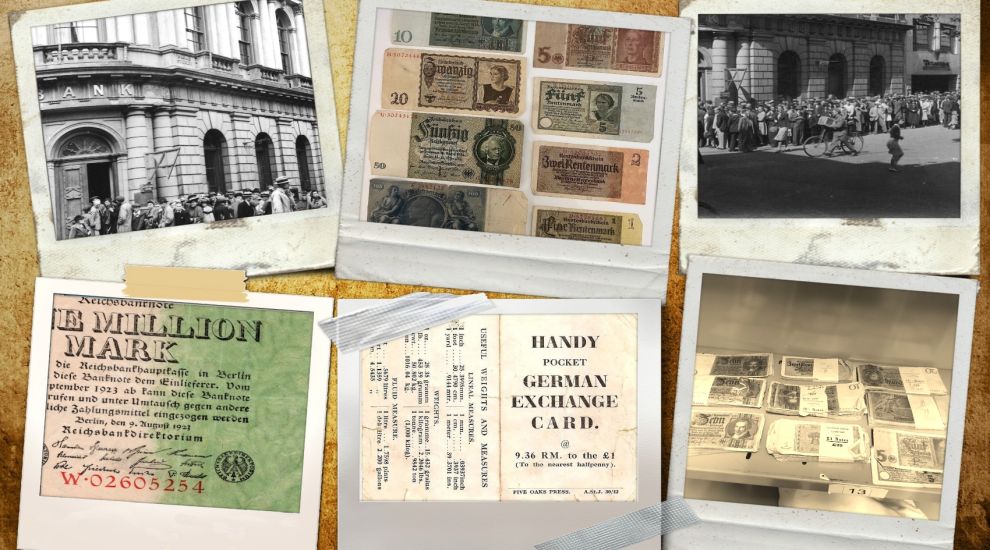

When Cyril Le Marquand House finally closed its doors, prior to demolition, there was an interesting discovery deep in the vaults of the building. On one of the shelves, sat a large box of German Reich bank notes, dating back to the Occupation.
The story of the Reichsmarks began after the defeat of Germany in World War I.
Germany was saddled with massive war debts which it had to pay to Allied countries and could barely afford because of its own debt. In 1918, the German national debt stood at 156 billion marks.
The strategy that Germany used to pay back their war debt, was to buy foreign currency with mass produced German mark bank notes.
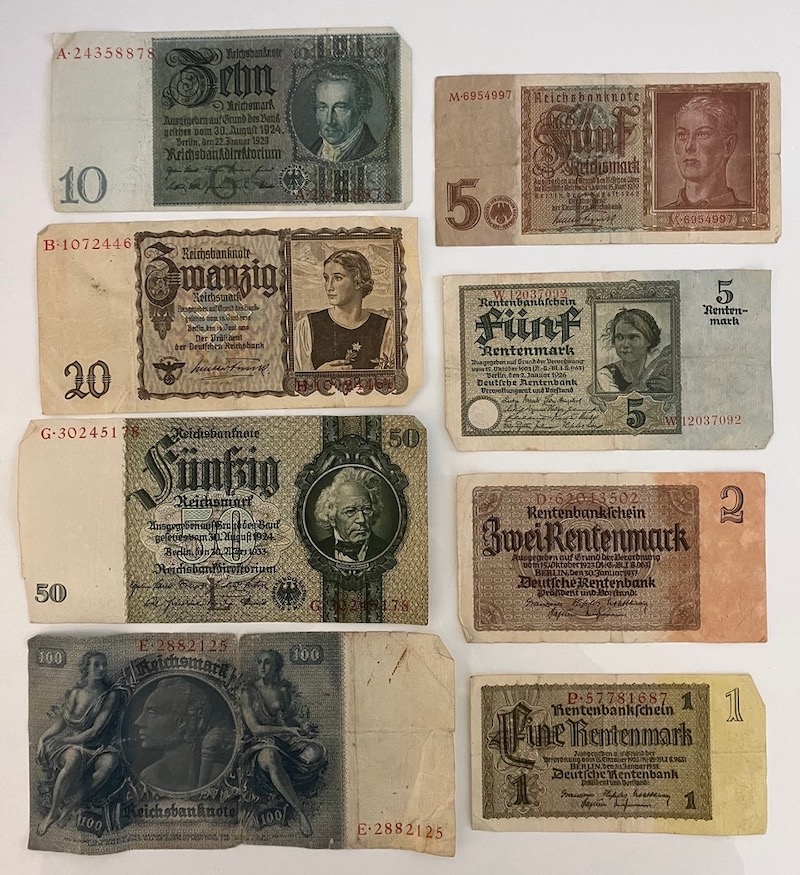
Pictured: German occupation currency used in Jersey. (Colin Isherwood)
Unfortunately, this strategy increased the inflation of the paper mark and by autumn of 1922, it became almost worthless, leading to Germany failing to pay a war debt instalment on time.
Prices in Germany spiralled out of control and led to hyperinflation. A loaf of bread which had cost 250 marks in January 1923, was costing over 200 million marks by October 1923 and at which time, it cost more to print a bank note than its face value. Incredibly economic stability came within just a few months with the assistance of Dr Hans Luther.
The then agriculture Minister, Hans Luther proposed a plan that substituted gold for agriculture and industry and created the Rentenmark, or mortgage mark. The plan was adopted, and the Rentenbank, was established by Hans Luther when he became Finance Minister in October 1923. (Hans Luther visited Jersey in July 1942, along with the Director of the Reichsbank, Dr Hans-Joachim Caesar).
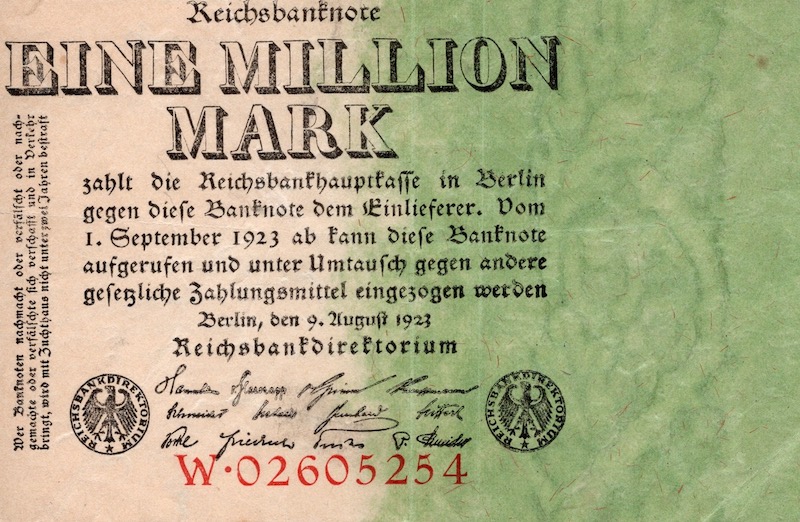
Pictured: One million mark banknote, printed in September 1923 during Germany’s hyperinflation.
After the German economy became more stable, another currency was introduced. The first Reichsmarks were issued in 1924 with a second issue in 1929. These notes celebrated people who had made contributions to German agriculture, industry, economy, science, and architecture, such as scientist Albrecht Thaer, engineer, inventor and industrialist Werner von Siemens, politician and banker David Hansemann and architect Karl Friedrich Schinkel. Further variations to the marks occurred from 1939 with many bearing the swastika symbol.
When the German armed forces arrived in the islands in July 1940, they brought with them, hundreds of Reichsmarks, and Reichskredit, the currency used in all German occupied territories. All Jersey banks and businesses were told that Reichsmarks would be the official currency in the island, which caused problems as, sterling was still in circulation.
By late 1941, the British paper notes were in poor condition and needed to be replaced and on 20th April 1942 a new Jersey currency note was issued. Approved by the German authorities and launched to coincide with Hitler's birthday, these new attractive notes were designed by local artist Edmund Blampied and became very popular souvenir items with the occupying forces.
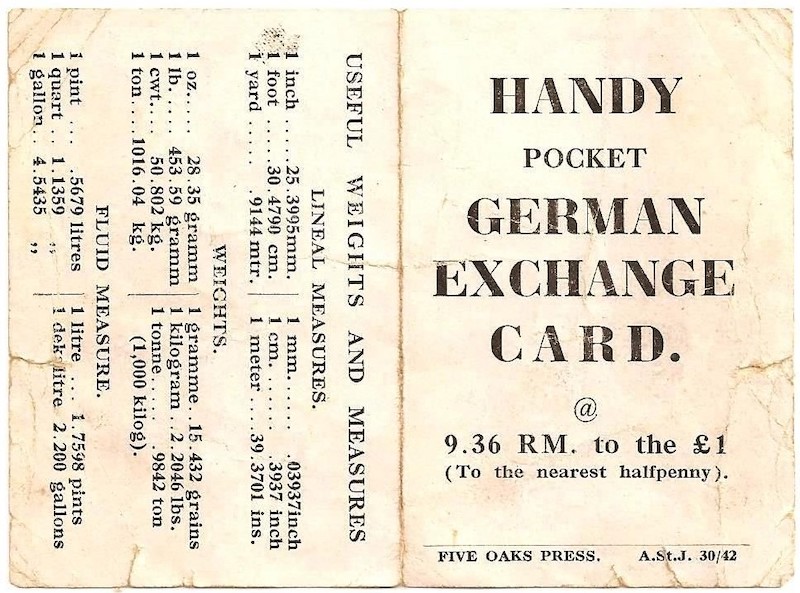
Pictured: Occupation exchange card printed in Jersey. (Colin Isherwood)
Many local shops in the early years of occupation displayed goods with British and German prices. Initially the exchange rate was set at 5RM to the pound, later becoming fixed at 9.36RM to the pound, although the Jersey banks kept all their accounts in sterling, which proved to be very wise, as in January 1944, the German authorities seized most of the British sterling currency held by the local banks.
Six days after Liberation, Jersey was visited by the British Home Secretary, who stated that the islands would get back to normal as quickly as possible and all Reichsmarks should be deposited at the banks by Friday 18th May 1945, as they would no longer be legal tender after that date. The exchange rate was set at 9.36RM to the pound.
As the deadline for exchanging the money was just a few days, it resulted in large queues of people outside the banks, so much so, that the deadline for exchanging the Reichsmarks had to be extended to Wednesday 23rd May 1945. The German money taken by the banks was eventually passed to the States of Jersey Treasury. The UK Government paid Jersey for the value of the Marks, but did not want to have them, so Jersey held on to the German notes.
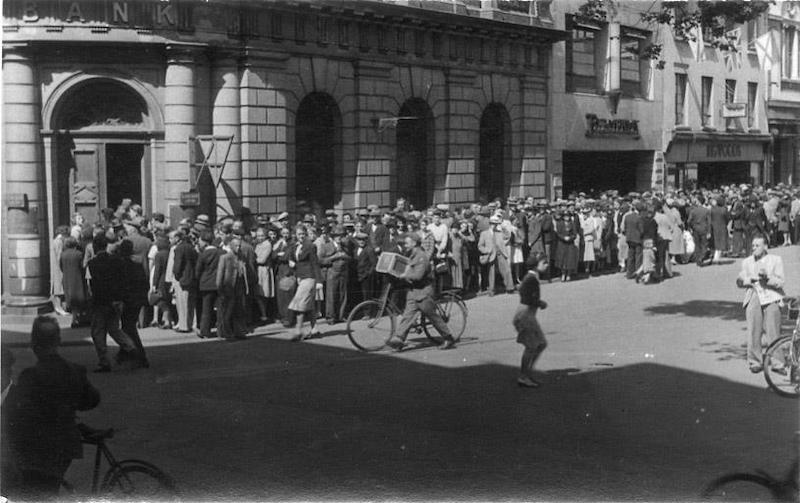
Pictured: Islanders queuing along Broad Street, to exchange their Reichsmarks at Lloyds Bank, Broad Street, shortly after the liberation in May 1945. (Jersey Evening Post / Jersey Heritage)
The occupation had been expensive, by the end of the war the Channels Islands owed over £10 million, approximately £541 million in today’s money. This was due in part for having had to pay for the evacuation ships, the costs incurred by evacuees in the UK, the cost of the occupation forces, wages, food, accommodation, transport as well as the cost of providing domestics for the Germans and civilian work for islanders and needing to pay for reconstruction and compensation after the war.
Part of this debt was met by a "gift" from the UK Government of £3.3 million which was used to reimburse islanders who had suffered damage and loss. In addition, the cost of maintaining the evacuees, estimated at £1 million was written off by the UK Government.
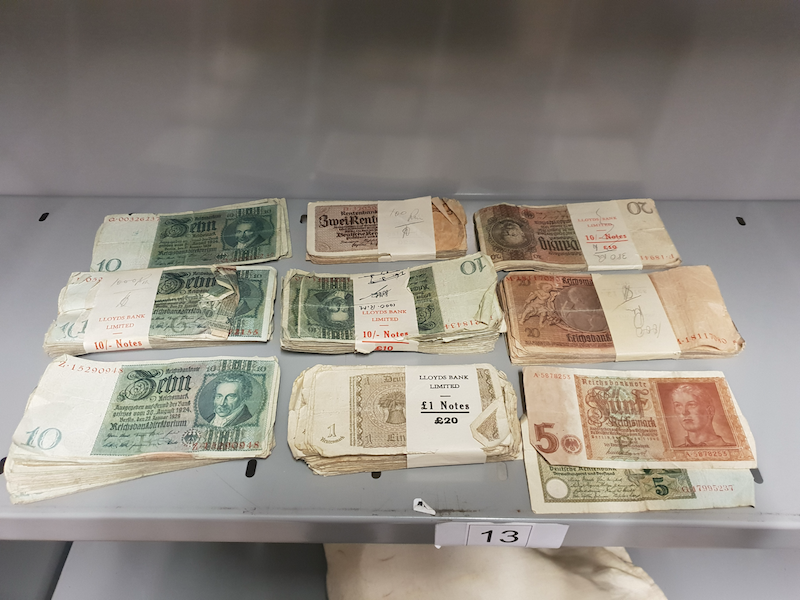
Pictured: Some of the German currency held in the vault of Cyril Le Marquand house. (Neil Pereira)
The Reichsmarks that had been passed to the States of Jersey Treasury, were held initially in the States building, in the Royal Square, then later kept in the vaults of Cyril Le Marquand House, before finally being passed to Jersey Heritage for future safe keeping.
Comments
Comments on this story express the views of the commentator only, not Bailiwick Publishing. We are unable to guarantee the accuracy of any of those comments.